There’s nothing quite like the hum from a hive for the beekeeper. Sometimes, you just can’t wait for the hive to wake, and you prompt them into action with a little knock.
This time, however, your greeting is met with complete silence. Perhaps they decided to sleep in, so you knock a little louder. Still nothing. Time for a peek.
When you open the hive, there’s no welcoming party. Not a single representative flies up to recognize your presence. This, in the beekeeping community, is known as a dead-out.
Here is how you can clean out your dead beehive and learn from this event.
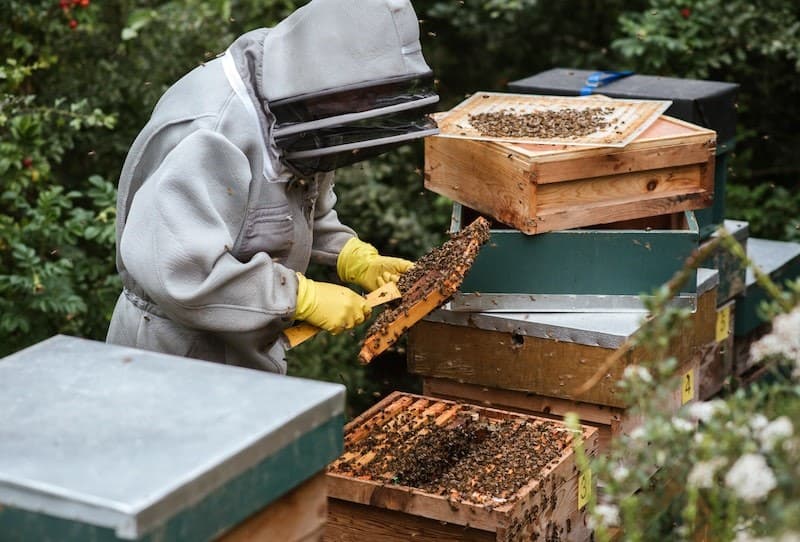
5 Primary Causes of Death Among Hives
To better understand how you should handle a dead beehive, it is important to first consider the cause of death to fully comprehend why you have dead bees.
Dead beehives can occur at different times of the year, depending on the cause of death of your entire colony.
1. A Dead Beehive Caused by Harsh Winter Elements
The biggest worry for the beekeeper is getting their bee colonies through the winter. These below-freezing temperatures are the most common natural cause of a dead colony.
Depending on how far north the bees are located in winter, there may be no natural food sources for many months, so they rely solely on their stocks. If the fall doesn’t yield enough nectar, then they don’t have enough in the pantry to get them through the winter, and they will starve to death.
If the size of the colony is too small, they could still starve or die from exposure. Many beekeepers have found a cluster of bees just cells away from their honey stores or an untouched candy board.
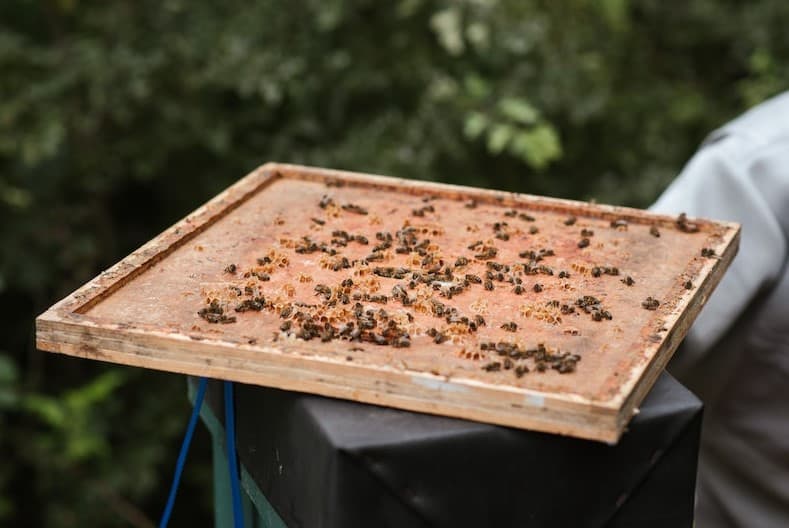
As you know, bees don’t feed on syrup in the winter and rely on
Bees are designed to slurp up the sugar, so they do need a little moisture and heat to liquefy their food a little at a time.
This heat and moisture are provided naturally by the cluster. They heat up the contents of the cells that are above them, making it possible for the bees to dive in and share with the rest of the colony.
The larger the cluster, the higher the temperature around the cluster and the more moisture it gives off.
If a colony of bees goes into winter with a small number, they won’t be able to generate enough heat to stay alive or make their food edible.
It’s heartbreaking to open a hive and find a dead cluster with a frame of remaining honey stored less than an inch away.
If the cluster was small, the next logical question is, why did the colony lose such a significant portion of its workforce? These days, the most likely culprit is the varroa mite, which causes a compromised immune system among bees.
2. A Dead Beehive Caused by Varroa Mites
Varroa has now been found to feed on the fat cells of adult bees. Previously, we thought that they only fed on the hemolymph (bee blood). If that wasn’t enough, they always leave the host with a parting gift in the form of viruses.
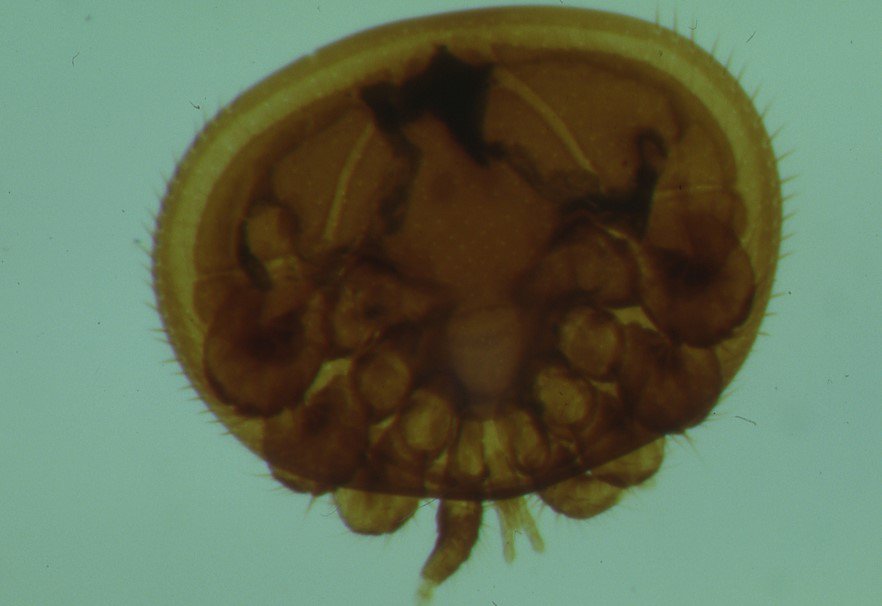
Most beekeepers prefer to treat mites once a year and do it just before the onset of fall for the above reason. To give the colony the best chance at surviving the winter, they need to build up a crew of healthy heat generators and caregivers whose purpose is to make it through the harsh frozen period as well as bring up the next generation of foragers come spring.
That’s impossible for a colony riddled with disease. Once you open up the hive, check the debris on
Once the hosts die, so do they, and if they are the culprits, you will see a significant number of them at the bottom of the hive, along with the dead bees.
3. A Dead Beehive Caused by a Poisoned Food Source
Sometimes, the entire colony dies due to the poisoning of their food source. Depending on the poison, the symptoms will vary.
Some systemic pesticides are the hardest on the brood and likely cause colony collapse.
In this case, there will be very few dead adult bees in or around the hive, but you may notice a lot of larvae being expelled from the hive. As the foragers die naturally, the contaminated food source is fed to the brood.
Once the nurse bees detect disease or deformity in the brood, they clean them out, causing a great decline in the workforce until finally, only a handful remain, and they are not enough to care for both brood and queen, causing the death of the colony. In this case, you will want to test your honeycomb for contamination.
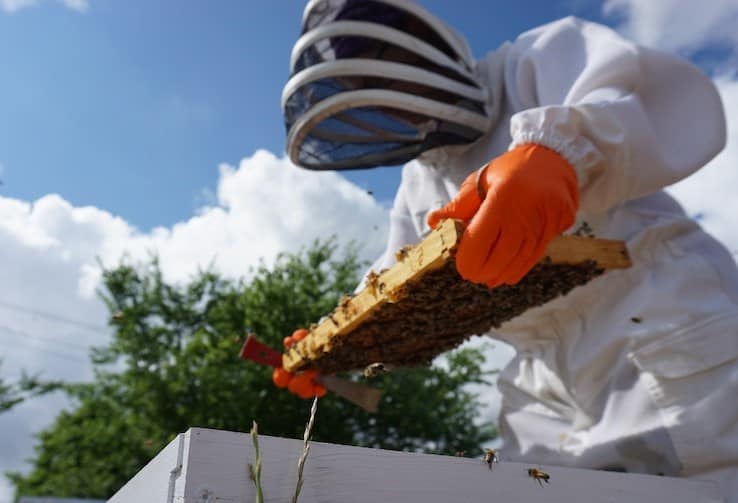
Many of these pesticides are soluble in lipids and may not be detected in honey. However, since the honeycomb can be used for years, the toxic substance can really build up in the wax and continue to affect both bees and the brood.
Other pesticides work a lot faster, and the effects are seen within days of exposure. You’ll find mounds of dead bees outside the hive, with a similar gruesome scene inside.
In one state, while spraying to control mosquitoes, they inadvertently caused the death of many colonies.
Elsewhere, some enthusiastic caretakers charged with caring for over 50 European Linden Trees nuked the trees while trying to rid them of aphids.
As a result, over 50,000 bumblebees dropped dead right there. In this case, you may have to get rid of the foundation and drawn comb. Pesticide contamination, unlike natural substances, cannot be cleaned up by bees.
4. A Dead Hive Caused by Predatory Insects
Other criminals to watch out for are predatory insects. Yellowjackets and wasps can wipe out a colony, especially if the colony is weak.
Once they invade a hive, the survivors of the attack won’t stick around. They are the worst kind of bully. In the hive, they eat the brood, take the honey, and kill countless adult bees.
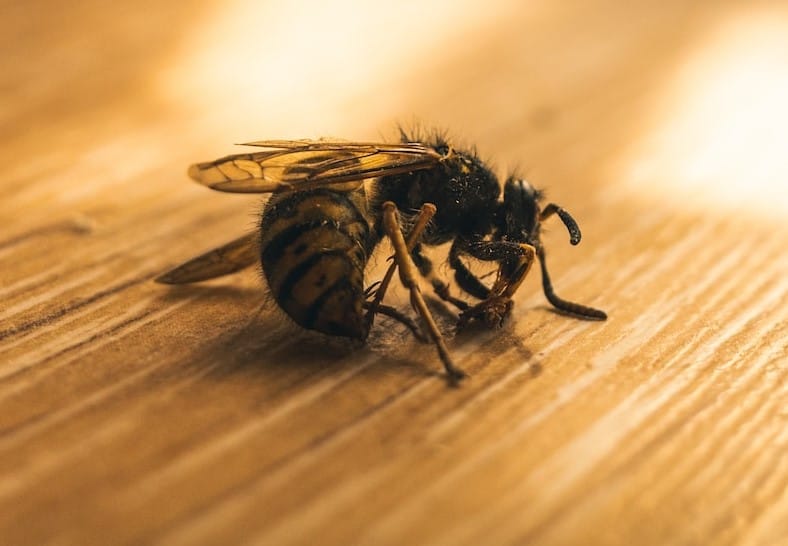
5. A Dead Beehive Caused by American Foulbrood (AFB) and European Foulbrood (EFB)
Finally, there are diseases that can cause death, such as American Foulbrood (AFB) and European Foulbrood (EFB).
This is caused by bacteria that target bee larvae, and it has no cure. Without a viable brood, the colony collapses.
Bees have also been known to contract Nosema disease, which is a fungal parasite that affects the digestive tract and causes bee dysentery (diarrhea).
It also affects the bee’s ability to produce the royal jelly needed to care for the brood, leading to colony loss.
What to do With the Dead Hive
Knowing how the bees died will guide you on how to deal with the hive in question.
In most cases, what kills the hive is no longer a threat once the colony is eliminated. The exceptions to this rule are bacteria that cause foulbrood and pesticide build-up in wax.
What to do With a Dead Hive Caused by American Foulbrood (AFB)

If you encounter a dead hive caused by American Foulbrood, popularly known as AFB, the first thing that alerts you to the epidemic is the smell.
It has truly earned its name in that sense. You either have to sterilize the hive using irradiation or destroy it.
AFB is nothing to scoff at, so the precautions needed to keep other colonies safe can appear quite drastic.
Many beekeepers will opt to destroy the equipment by fire in order to avoid the risk of contaminating other colonies.
What to do With a Dead Beehive Caused by Pesticide Poisoning
With pesticide poisoning, diagnosing the problem with absolute certainty would involve having samples of comb professionally tested. As modern agriculture spreads across the country, so does pesticide use.
Many beekeepers replace brood comb every few years because of pesticide build-up. Sometimes, these compounds won’t be detected in the honey because of lipophilic, meaning they dissolve in oily substances, including wax.
Some of these compounds affect bee larvae, which affects the productivity of the colony long-term. Replacing the comb and foundation will be essential if you are to reuse the hive.
What to do With a Dead Beehive Caused by Nosema Disease
In the case of Nosema disease, irradiation or fumigation can be used to clear the hive of spores. Destruction of equipment may not be necessary.
What to Do with A Dead Beehive That Died of Natural Causes
If the bees died of natural causes, it’s a little easier to get the hive ready for new occupants.
For colonies that died during the winter due to starvation or exposure, you may find mold in the hive.
Ordinarily, mold spores are everywhere, waiting for the right conditions to grow. The dead, decaying bees create excess moisture in the hive.
Without bees to fan the moisture away and help with ventilation, the mold thrives. Fortunately, the bees are quite capable of cleaning up mold.
It is advised, though, that you spread the workaround to different well-established hives rather than inserting all the moldy frames in one hive.
An additional advantage is that some types of mold inhibit the growth of bacteria which would give the colony a health boost.
Ensure that you clean out all the dead bees from the bottom board and try and get those in the cells out as well with a good shake. What doesn’t fall out will likely be cleaned out by the bees of the new colony.
What to do With Honey From a Dead Hive
Once again, the cause of death will be your guide.
If the issue was exposure, the honey could be frozen and used to feed the new colony.
If the cause of death is bacterial, destroy the honey.
Moving that honey to another colony could spread the disease with devastating effects.
It’s better to lose the honey and keep the bees than lose both.
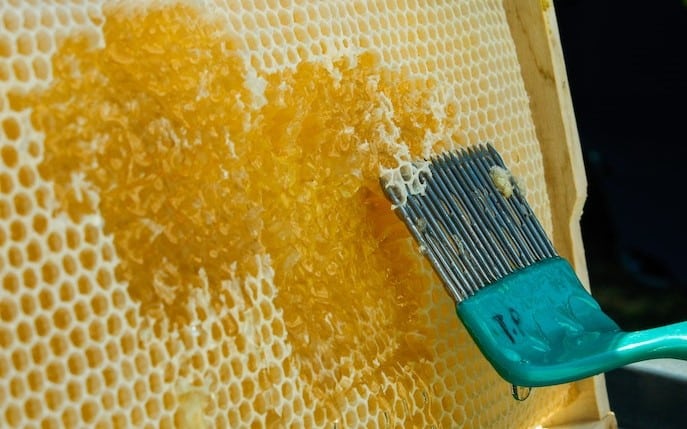
3 Additional Tips for Cleaning and Dealing with a Dead Hive
Below are three additional things that you should take into consideration on how to deal with and clean out a dead beehive.
1. Where possible, keep the brood comb
Unless the comb is likely to kill a new colony, keeping the brood comb is a great way to attract swarms.
Although most beekeepers purchase packaged bees, swarms are a great way for a hobbyist to restock, and it’s cheap.
It seems that the old brood comb gives the hive that lived-in feeling, making it cozy and inviting.
When spring comes about, swarms in search of a new home will send out scout bees, who have the ‘presence of brood comb’ on their bonus column on the new home checklist.
You can place the brood comb in your swarm traps or bait hives to make it easier for you to capture the swarm.
2. Document it
It is important to keep good records of the behavior of your bees. It will prove to be instrumental in the necropsy (animal autopsy) as well as ensure that the mistakes made are not repeated. To do this, use
This is particularly important when it comes to overwintering. Good record-keeping ensures you can look back on the weeks before you discovered that the hive was dead and learn from that experience.
3. Enlist the help of an expert to diagnose the dead hive
As mentioned, knowing the why will provide options on how to deal with it.
If it is varroa, then the equipment will be sound. But, you will need to alter your treatment regimen to get the vector under control.
If it’s AFB, it’s probably time for a hive-fueled bonfire. If not, you risk spreading the disease to other colonies within your apiary and beyond.
What You Can Learn From a Dead Hive
Learning from your mistakes is like getting a tattoo on your brain. You always remember when things go wrong.
What to Learn from a Hive That Died of Natural Causes
When your colonies don’t make it through the winter, you will make changes the next time the season comes about. If they starve, then you know to provide more food either by harvesting less or supplementing more.
If they died of exposure, you would remember to combine a small colony with a larger one to ensure that you don’t lose as many bees. You can make a split when the season changes and get your colony numbers up again.
What to Learn from a Hive That Died of Varroa Mites
If the culprit is the Varroa mite, you will dedicate lots of time and energy learning how to monitor and control mite numbers and the multiple treatment options available and suitable for use.
What to Learn from a Hive that Died of AFB
If your colony’s downfall was brought about by AFB, then you need to do more to prevent the bacteria from taking over other colonies in your apiary.
These lessons will stay with you for the rest of your beekeeping days.
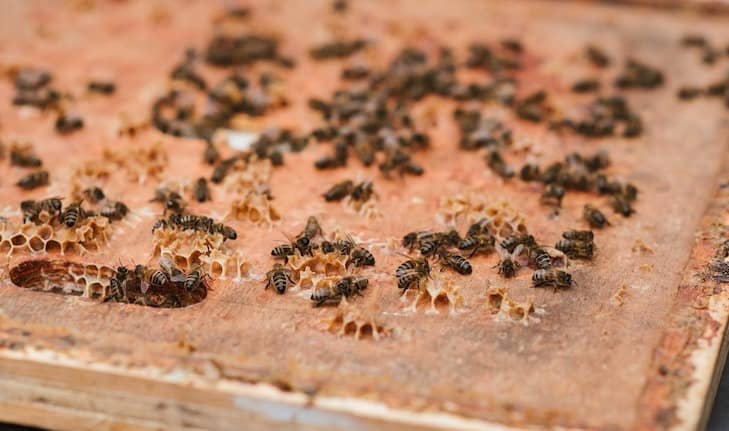
How to Repopulate a Dead Beehive
I can’t emphasize enough how important it is for you to ensure that the equipment you aim to repurpose is safe.
Once you have done so, all you need to do is scrape away the dead bees, burr comb, and propolis, and it’s ready for a new colony.
If you aim to purchase package bees, you will need to order them early to ensure that they arrive in good time. Alternatively, you can use your local beekeeper’s association to locate a split colony for sale.
In that case, you may have to organize the pick-up yourself because a split has the benefit of coming with a brood. This means that their numbers will pick up much faster than a package colony.
Finally, nature could smile upon you and deliver a swarm. The only problem is that sometimes they decide to rest in an inaccessible area, making it difficult to collect.
If you can capture the swarm, it will be the most affordable way to restock your beehive. You will want to keep an eye on them, though, to ensure that they haven’t brought some uninvited guests, such as mites and bacterial spores.
Final Thoughts
Although dead-outs or dead hives can be discouraging, they happen to everyone at one point or another. It doesn’t need to be the end of your beekeeping activities.
They are a very effective learning tool, even for the experienced beekeeper. Just think of them as an opportunity for a brand new start.


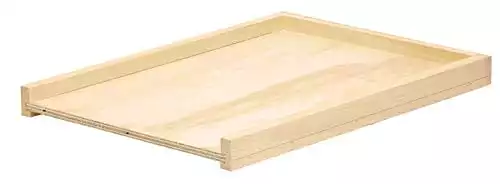

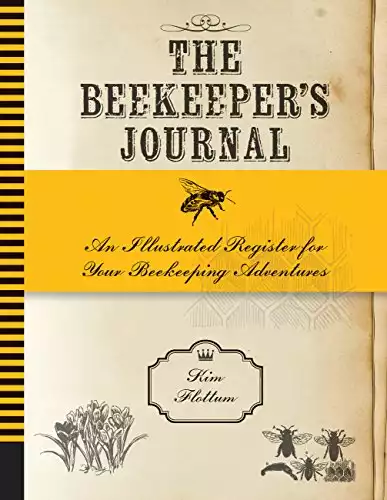
How to store a dead hive in the fall over winter
One hive the frames where all black ???